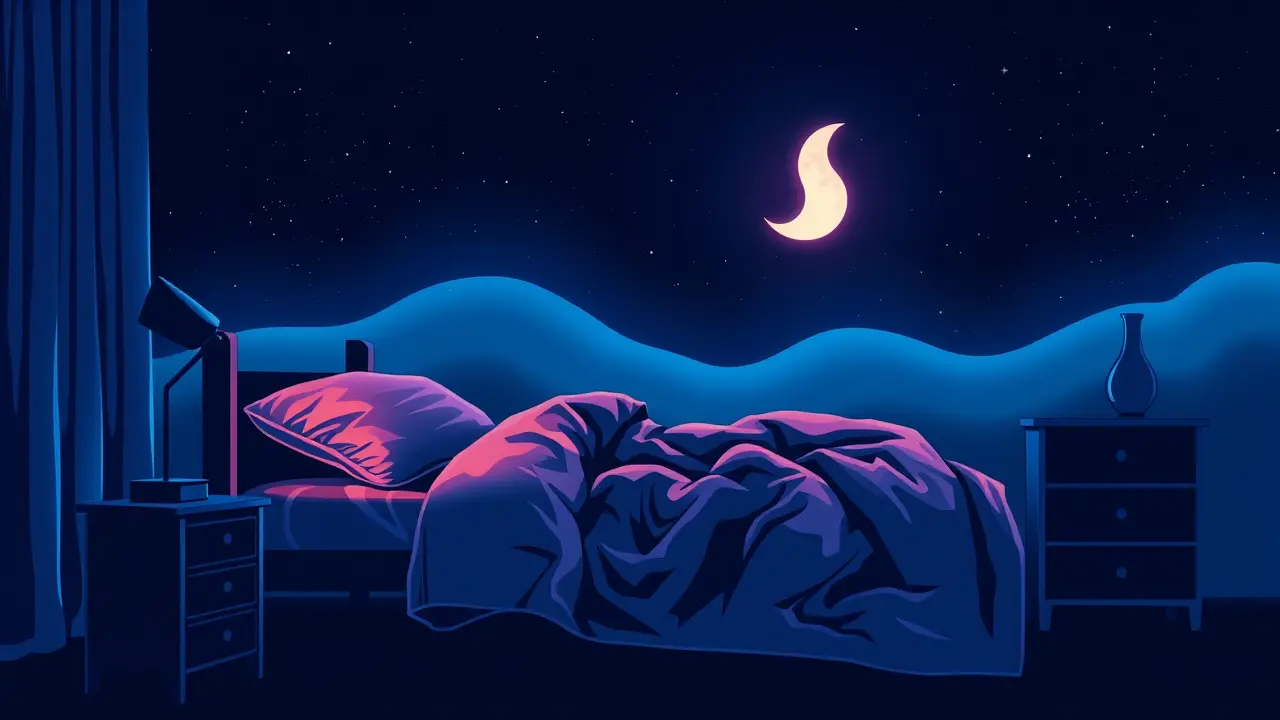
ScienceneuroscienceSleep and Consciousness
Historical Biphasic Sleep Patterns and Modern Changes
LA
Laura Bennett
11 hours ago7 min read1 comments
If you've ever jolted awake at 3 a. m., your mind racing as you stare into the darkness, convinced your insomnia is a personal failing, consider this radical historical comfort: you are not broken; you are ancestral. For the bulk of human history, that stark midnight interruption wasn't a disorder but a design feature of the night.Our predecessors commonly practiced what sleep researchers now call biphasic or segmented sleep. They would retire shortly after dusk, entering a 'first sleep' that lasted several hours before naturally awakening.This wasn't a moment of panic. Instead, it was a quiet, often productive, interlude of wakefulness that could last an hour or more.People used this time in profoundly human ways: they might stoke the fire, pray, write in a diary, converse with their bedmate, or even visit neighbors. The 16th-century physician Laurent Joubert, for instance, noted this period was considered an excellent time for scholars to study and for couples to conceive, as they were most 'rested' after the first sleep.This wakeful period was followed by a 'second sleep' that carried them through until morning. The evidence for this pattern is not merely anecdotal; it's woven through court documents, personal diaries, and medical texts from across Europe and North America.The historian A. Roger Ekirch, whose seminal research brought this phenomenon to light, found references in everything from Homer's Odyssey to Geoffrey Chaucer's *The Canterbury Tales*.So, what happened? Why did this deeply ingrained biological rhythm vanish? The culprit, as is so often the case, was a technological and social revolution. The widespread adoption of artificial lighting, first with gas lamps and then decisively with Thomas Edison's electric light bulb, fundamentally altered humanity's relationship with darkness.Night was no longer a time of enforced rest but a potential extension of the day for work and socializing. The Industrial Revolution, with its rigid timetables and demand for factory efficiency, further cemented the value of a single, consolidated block of sleep.A worker who was awake and alert for a full, uninterrupted shift was more valuable than one who had been up tending a fire or reading scripture in the middle of the night. This cultural shift was so powerful that it effectively reprogrammed our collective perception of sleep.What was once a normal, biphasic pattern became pathologized. Waking up at night transformed from a natural occurrence into a symptom of sleep maintenance insomnia, a disorder to be treated and corrected.Our modern obsession with achieving eight hours of unbroken slumber, a concept heavily promoted by the sleep aid and wellness industries, is a direct legacy of this 19th and 20th-century transformation. Yet, our biology may still remember the old ways.Sleep studies conducted by researchers like Thomas Wehr at the National Institutes of Health have shown that when people are deprived of artificial light for extended periods, their sleep patterns often naturally drift back toward a biphasic structure. This suggests the pattern is a default setting, deeply encoded in our physiology, waiting just beneath the surface of our electrified lives.The implications are profound, forcing us to reconsider the very nature of a 'good night's sleep' and offering a liberating perspective for the millions who lie awake in the small hours, burdened by the anxiety that they are doing it wrong. Perhaps, in those quiet, solitary moments, we are not failing at modern sleep but briefly, and perfectly, connecting with a much older human rhythm.
#featured
#sleep patterns
#biphasic sleep
#human history
#health
#anthropology
#editorial picks news
Stay Informed. Act Smarter.
Get weekly highlights, major headlines, and expert insights — then put your knowledge to work in our live prediction markets.
Related News
© 2025 Outpoll Service LTD. All rights reserved.
